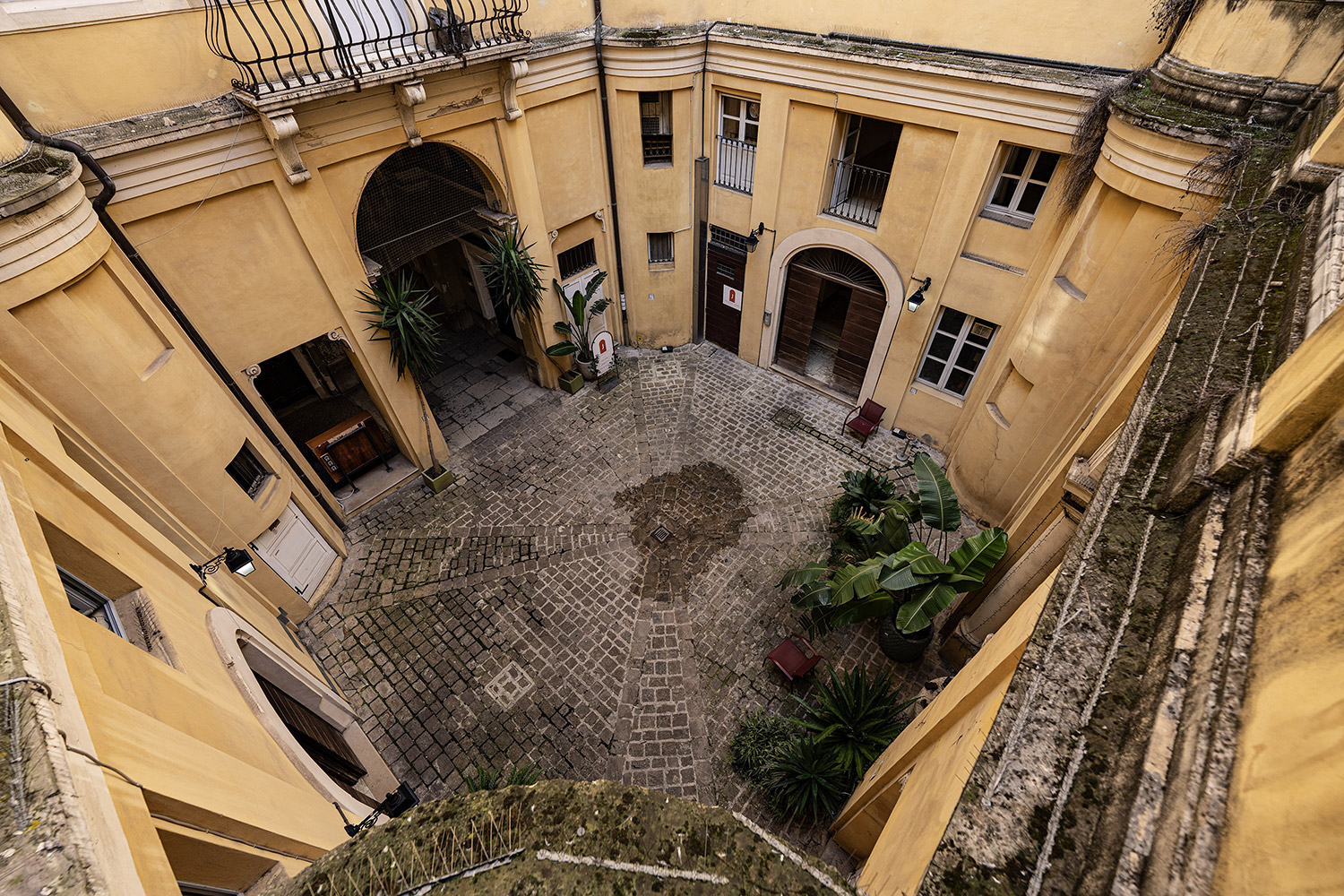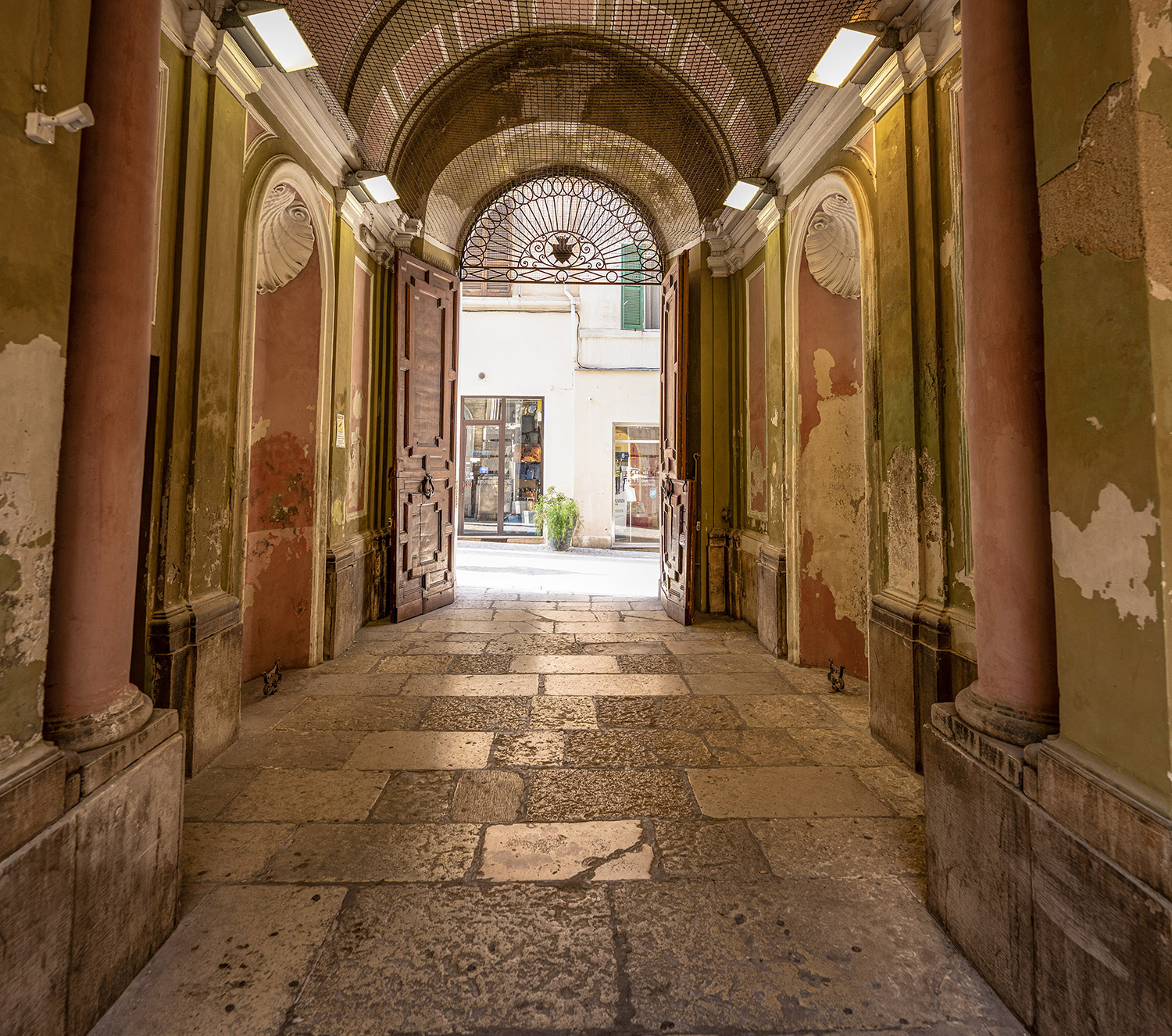Along Corso Mazzini (formerly Via del Calamo) one can admire the superb Palazzo Jona (originally: Moscheni), which stands out for its magnificent portal and C-shaped plan with the main entrance on Corso Mazzini. It was originally probably designed by Carlo Marchionni, who used Vanvitellian elements such as the curved corner-canton with the plaque and festoon, the columned exedra, and the shell in the niches of the entrance hall, characterising it with the main Doric order portal with dado ashlars flanked by four shops on each side and double pilasters with smooth ashlars at the cornerstones that turn onto via Gramsci.
The atrium introduces a serliana leading to the grand staircase and the internal courtyard enclosed by a columned exedra. The architect received the commission from the Millo family, ruled by the powerful Cardinal Giovanni Giacomo Millo pro Datario Apostolico, his protector and opponent of Vanvitelli's return to Ancona (the work on the port, resumed in 1756, was entrusted to Carlo Marchionni). The Millos were originally from Monferrato and chose to settle in Ancona; in 1756 Carlo Francesco Millo, the cardinal's nephew married Angelica Moscheni. For Giovanni Giacomo Millo, who died in 1757, Marchionni designed the funeral monument in the church of S. Crisogono in Rome in 1758, commissioned by his nephew the Marquis Carlo Francesco Millo: the latter, having become heir to the palace in Corso Mazzini, had it rebuilt between 1759 and 1770.
The palace was decorated by Giuseppe Pallavicini on commission from Marquis Guglielmo Millo, with subjects of various types spread throughout the twelve rooms on the second floor, including the door overlays: the work began before 1778, the date recorded in the deed of payment. It is probable that for the choice of subjects Guglielmo was advised by his paternal uncle Pio Bartolomeo, the true creator of the iconographic programme where the Gallery of Cupid and Psyche (a copy of Raphael's Marriage of Cupid and Psyche painted for Agostino Chigi in the Loggia of the Villa Farnesina in Rome); Allegories of the Marriage Bond; Military Life; Domestic Life. Crossing the Red Sea; Historical views; Mythological subjects. The palace in the course of time passed to the Bourbon del Monte and later Jona families.

